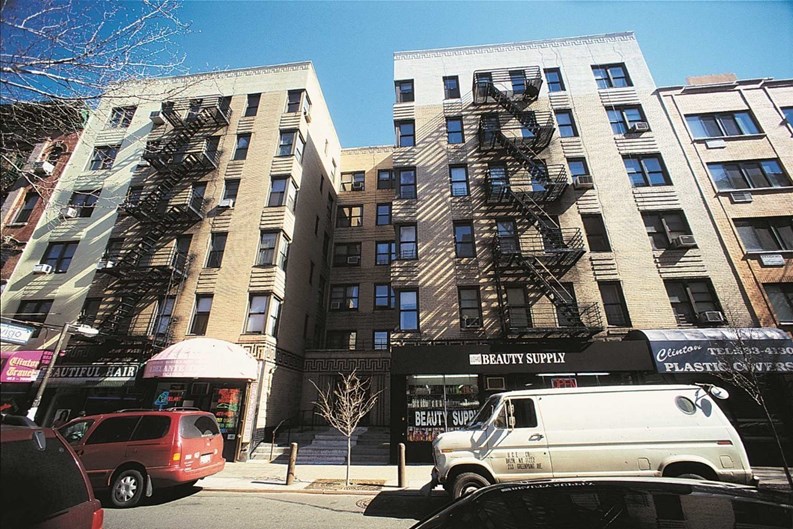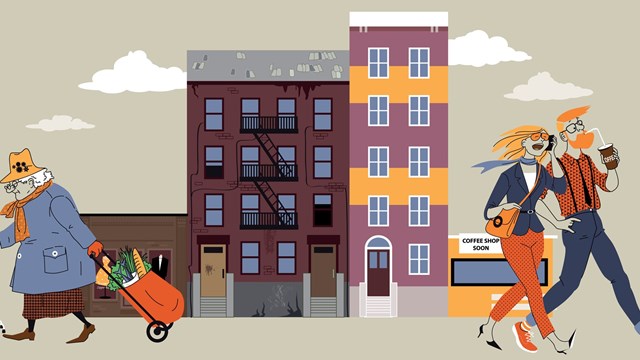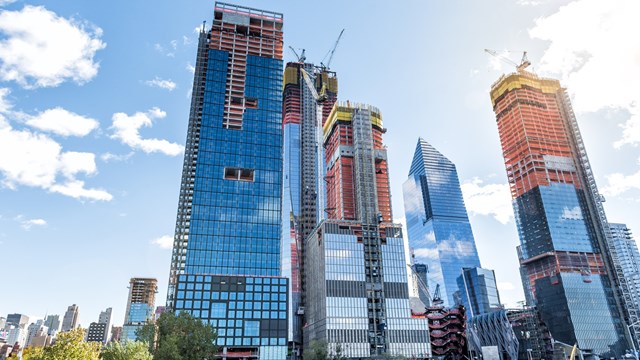In 1974, a group of New York City residents banded together to preserve affordable housing in the city and the push resulted in the creation of the advocacy group, Tenants & Neighbors. Since that time the nonprofit group has been working to preserve lower-income housing by organizing and educating residents of such housing across the city and the state.
Grassroots Education
The mission of Tenants & Neighbors is to preserve and protect affordable housing and to advocate for tenants’ rights and education. Tenants & Neighbors’ constituency includes tenants and organizations concerned with issues relating to federally subsidized housing, rent-regulated housing, and Mitchell-Lama housing. Statewide, Tenants & Neighbors has 18,000 members from 150 tenant organizations and other organizations. The group works to educate tenants of such housing—both renters and shareholders, as well as affiliated organizations to help them to preserve low-income housing and the concomitant protections that are afforded to its residents.
Tenants & Neighbors provides direct organizing for Mitchell-Lama tenants, and educates them on how the organizing tenants’ associations and by drawing tenants into coalitions, Tenants & Neighbors helps to empower Mitchell-Lama residents to work to save their housing.
Mitchell-Lama and Affordable Housing
Established in 1955 to encourage middle-income families to stay in the cities, including New York City, the Mitchell-Lama program gave tax breaks and low-interest loans and mortgages to cooperative developers. In exchange, developers would follow rules keeping rents, maintenance fees and purchase and resale prices well below market value for a period of time (generally 20 years), after which the co-op corporations could opt out of the program. In addition, the Mitchell Lama program provided eviction protection for co-op shareholders.
Now that the time limits have passed landlords can prepay any existing mortgage and give up their tax relief in order to charge market-rate rents. Many Mitchell-Lama building owners in New York City and throughout the state are taking advantage of the opportunity. More than a third of Mitchell-Lama developments have bought out of the program and more will likely go the same route. More than 55,000 apartments are now in danger of being converted, Tenants & Neighbors officials say.
Co-op shareholders are split between those who intend to remain in their apartments and want to maintain controls for lower maintenance fees and eviction protection and those looking to take advantage of eliminated restrictions on apartment sale prices.
“The median income for a Mitchell-Lama tenant is in the low $20,000s,” explains Tenants & Neighbors organizer Amy Chan, who works specifically with residents in the Mitchell-Lama state-subsidized housing program. “The problem is that more building owners are leaving the program. It’s a limited-profit program, and as owners continue to leave, eventually there won’t be any Mitchell-Lama units left. Families are at risk.”
Chan primarily works with tenants associations, in particular, those facing buyouts of their buildings. She helps such groups to understand how the buyouts work and how the tenants will be affected by the changes. Chan also works with policy groups to enact legislation to aid lower-income tenants. “If we can’t stop a buyout, we work on better protection,” she says.
Privatization and Rising Housing Costs
By organizing tenants associations and drawing tenants into coalitions, Tenants & Neighbors officials work to beat back the gentrification of lower-income housing. The city and the state are losing chunks of the cultural tapestry that make New York such a diverse place, Chan says.
“We’re pricing lower-income and middle-income people out of the city. You’re also losing the ethnic and cultural diversity of the city—and eventually you’ll have a very homogenous society,” Chan says.
Privatization is the greatest issue facing Tenants & Neighbors, says Jumaane D. Williams, executive director of Tenants & Neighbors. The conversion of Mitchell-Lama units has resulted in the loss of 40 percent of the city’s affordable housing, he notes.
“All affordable housing is under attack,” Williams says. “Circumstances have allowed landlords to opt out of Mitchell-Lama. And the protections of tenants in the Mitchell-Lama program are weak… We help people to understand the power that they have, and help them to harness that power and use it more effectively.”
Tenants & Neighbors also works to preserve low-rent housing by working with individuals and other organizations and advocating legislation to keep rents moderate. The group advocates for greater eviction controls, including clearer guidelines on how a tenant can be evicted. Additionally, Tenants & Neighbors works to set guidelines for regular maintenance of Section 8 apartments, because the organization believes that tenants have a right to regular building repairs.
With 129,000 families on the New York City Housing Authority’s waiting list to receive Section 8 vouchers, it seems clear that the city is facing a housing crisis, says Tenants & Neighbors organizer Patrick Coleman. “The market can’t solve the housing crisis in New York. Just one in four families that’s eligible for Section 8 housing are getting it,” he says. “We’re watching large housing developments being sold at very high rates.”
Big Deals, More At Stake
Two such developments are Stuyvesant Town and Peter Cooper Village, which together account for about 11,000 units. Metropolitan Life Insurance recently sold the properties for $5.4 billion to the Tishman Speyer real estate group. About 70 percent of the tenants in those developments live in rent-regulated units, Coleman notes. “The new owners will have to go after rent-regulated units to recoup that investment,” he says, adding that 40,000 Mitchell-Lama units have been converted across the state in the past decade.
If a rent-regulated unit goes vacant, the owner can increase the rent by 20 percent if the owner has $40,000 in repairs done to the unit, Coleman notes. As soon as the landlord can charge $2,000 for the unit, the unit is no longer rent-controlled, Coleman adds.
Other large properties in the city also could be converted to less affordable housing soon, Coleman adds. Starret City in Brooklyn, a Mitchell-Lama development of nearly 6,000 units that is the largest subsidized housing development in the country, currently is for sale for more than $1 billion.
Politics & Housing Issues
Despite these challenges, Tenants & Neighbors officials remain optimistic. “There’s always hope,” Coleman says, noting that there are many groups focusing on rent-regulation and affordable housing. Such groups include the Met Council On Housing, Housing Here And Now, the Mitchell-Lama Residents Coalition and others. The recent leftward swing in political power at the state and federal levels brings great opportunity to groups working in the area of affordable housing, Coleman says. “It has been a great change already,” he says.
Under the administration of former Governor George Pataki, the rent-control system has been eroded, says Natasha Winegar, rent regulation organizer for Tenants & Neighbors. Those state-level changes have helped landlords to decontrol more than 200,000 affordable housing units statewide in the past decade, she notes.
“These laws are controlled at the state level, and must be renewed periodically. The state has weakened the laws and created a lot of loopholes for landlords,” Winegar says. “Rent-controlled and rent-stabilized apartments number one million in the city, and are the largest group of affordable housing in the state.”
Unlike Mitchell-Lama and Section 8 housing, rent-controlled and rent-stabilized apartments don’t require subsidies and don’t necessarily expire after a set period of time. Landlords can’t simply opt out of rent-regulated housing agreements, but they’ve still found ways to decontrol such units. Winegar works with tenants to preserve and strengthen the rent laws by working to keep rents moderate, providing eviction controls and setting guidelines for maintenance of apartments. But because some state politicians have few constituents who live in rent-controlled housing, they are not concerned with helping that particular constituency, says Winegar.
Recent Accomplishments
“One of our major fights has been to restore local control over rent-control laws,” Winegar says. “At the recent New York City Rent Guidelines Board, we pushed them to pass a resolution in favor of home rule of rent-control regulations, and the board did not pass the resolution. But we were able to bring the issue to the attention of the media… More recently, in Pataki’s last days as governor, he proposed pro-landlord changes in the city and state rent regulations. Tenants & Neighbors worked with a large coalition of organizations to have those changes rescinded. As a result, Governor Spitzer was able to overturn those laws.”
Coleman says the rent-regulation campaigns of Tenants & Neighbors are efforts of which its members are particularly proud. The last major rent-regulation campaign was in 2003, when Tenants & Neighbors spearheaded a coalition to preserve rent-regulation laws, which were renewed, Coleman notes. “We’ve also been working for 13 years to save subsidized housing, and we’ve helped to save about 10,000 of such units across the state,” he says.
The loss of affordable housing in New York continues while higher priced units in the city remain vacant, Williams says. “While people are clamoring for more affordable housing on the bottom level, higher-scale housing is vacant,” he says, adding that the loss is a human one that amounts to a brain-drain. “We could end up losing good people, good ideas, experienced workers and possibly tax bases to other areas. People are finally starting to recognize the problem, but I don’t know if they’re doing much about it”.
“Having one type of people anywhere is boring, and you need diversity to see any city survive. You can’t survive with just one segment of the population.”
The problem of providing affordable housing in a city known more for its power and wealth than its poverty and neglect is essentially a human problem that people must address, Tenants & Neighbors officials say.
“Housing, we feel, is a human right. And a lot of societal problems we have stem from people who have no homes, or who live in substandard homes. Good housing is integral to having a healthy life, and a healthy society,” says Coleman.
Jonathan Barnes is a freelance writer living in Pittsburgh.










Leave a Comment